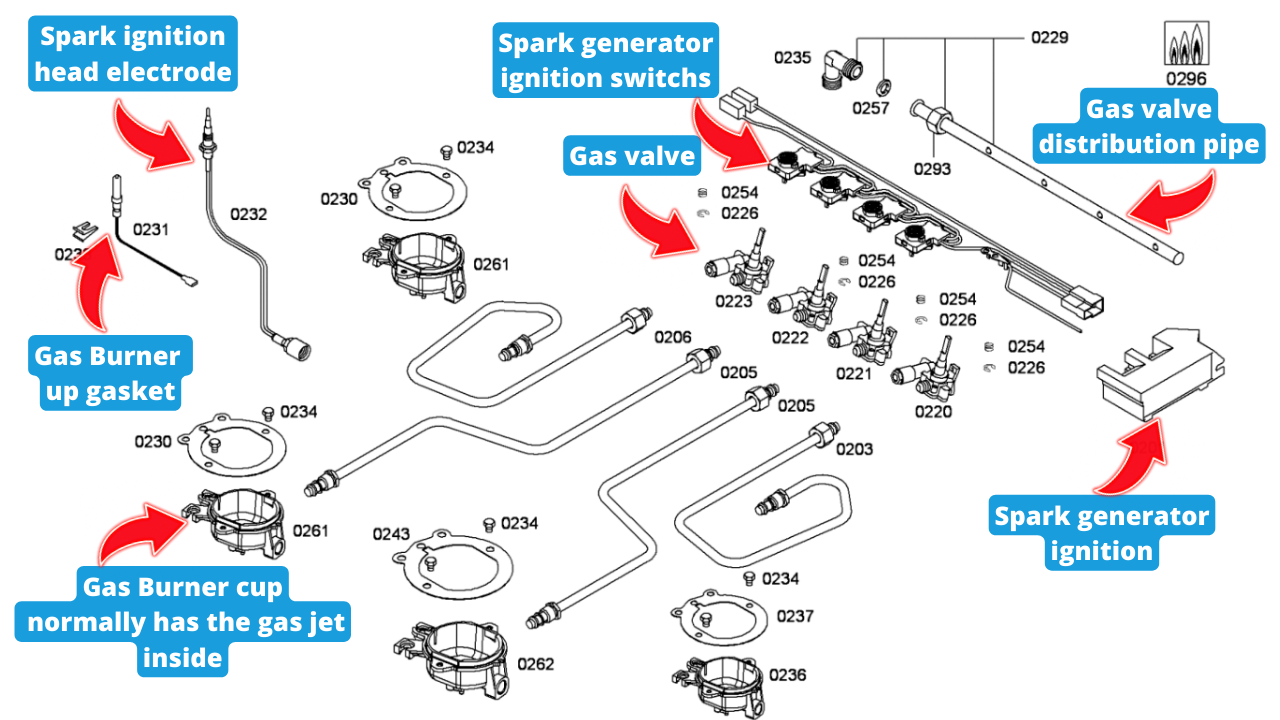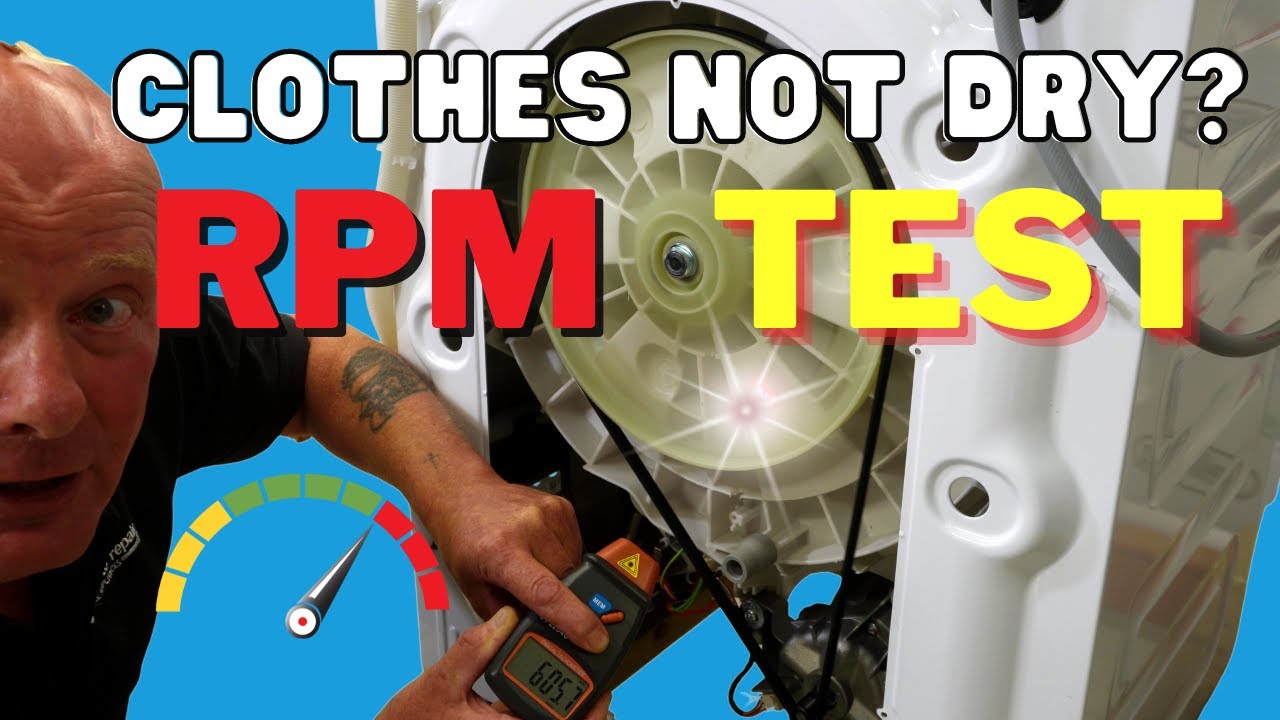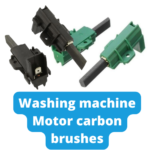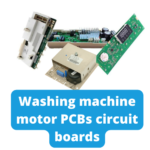Washing Machine Troubleshooting: Ticking Noise from Motor and PCB Issue BEKO
Fix Beko Washing Machine Ticking Noise & PCB Fault! DIY Repair Guide 🔄
Comprehensive Guide to Diagnosing and Repairing a Beko Washing Machine with Motor Ticking Noise and Circuit Board Short
In the video below, discover how to repair a ticking noise problem with your washing machine.
Introduction
Welcome to How To Repair, where we will guide you through the process of diagnosing and fixing a Beko washing machine that exhibits a ticking noise from the motor and has caused an electrical short on the circuit board. This comprehensive guide will walk you through the steps required to address these issues and get your washing machine running smoothly again.
Tools Required for the Repair
Before we dive into the repair process, let's start by listing the tools you'll need:
Screwdriver set - To remove screws and access internal components.
Elbow joint socket set 1/4 drive- For maneuverability and to reach tight spaces.
Multimeter - To check for electrical continuity and diagnose circuit board issues.
Replacement motor - Ensure it's compatible with your Beko washing machine model.
Replacement carbon brushes - These should be in good working order.
Circuit board replacement (if necessary) - Make sure it matches your model.
Safety gear - Gloves and safety goggles for protection.
Cable ties - To secure connections.
Replacement components (if needed) - Be prepared with new parts in case any are damaged beyond repair.
Workspace lighting - Proper illumination for a clear view of components.
Now, let's dive into the repair process step by step:
Step 1: Disconnect Power and Water Supply
Safety first. Before starting any repair, ensure the power supply is disconnected, and water connections and drainage systems are detached to prevent accidents.
Step 2: Take the lid off the machine and remove the back panel before you remove the Motor
a. Start by taking off the belt, ensuring it spins freely without obstructions. b. Check the motor's bearings for wear and tear and listen for any unusual sounds. c. Unfasten the four mounting bolts holding the motor in place. d. Disconnect the electrical harness from the motor. e. Lift the motor away from the washing machine, leaving an empty cavity for the new motor installation.
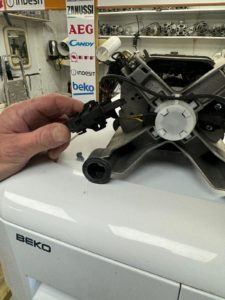 Step 3: Inspect Carbon Brushes
Step 3: Inspect Carbon Brushes
Upon closer inspection, check the carbon brushes for signs of wear. If there's any arcing or damage, it's a potential cause of electrical issues. Consider replacing them with new brushes in good working order.
Step 4: Install the Replacement Motor
Slide the suitable substitute motor underneath the machine, align the mounting holes, and secure it tightly using the original hardware. Reattach the belt, ensuring the correct tension and alignment. Once completed, check for the absence of the ticking noise, confirming a successful installation.
Step 5: Examine the Circuit Boards
a. Check the main program circuit board located behind the facial panel. b. Examine the motor module or motor printed circuit board. c. Remove the necessary screws to access these boards. d. Inspect for any visible burning marks or blown tracks on the circuit boards.
Step 6: Replace Faulty Circuit Boards (if necessary)
If you find burning marks or damaged tracks on the circuit boards, replacement is the most effective solution. Ensure the replacement boards match your Beko washing machine model.
Step 7: Reassemble
Reattach all connections securely. Reassemble all other components, including motor and wiring. Ensure the belt is lined up on the drum pulley wheel, and rotates freely?. Test the machine before replacing the lid and the back panel.
Conclusion
On some occasions, the circuit board can be repaired. If no components on the circuit Bourne have blown I normally use three to five strands of thin copper wire out of the cable and then solder them between the components creating a track. You do not want to create a track that is too thick, because if it ever blew again, it would do more damage to components than the track.
In this comprehensive guide, we've walked you through the process of diagnosing and repairing a Beko washing machine with a ticking motor noise and a circuit board short. By following these steps and using the appropriate tools, you can restore your washing machine's functionality and save on costly repairs or replacements. Remember to prioritize safety and consult a professional if needed for complex electrical issues. Thank you for watching, and stay tuned for more repair guides!
Atypical wiring diagram from Beko Washing Machine WMB71642W
-
Not emptying in allocated time Error code E05 Beko washing machine
-
Diagnosing faults on washing machine Motors and testing them
-
Beko washing machine error codes explained digital display and LED types
-
Beko Washing machine not Starting E7 Error code E07
-
Beko washing machine wmb 7, 8, 9 Series diagnostic & test mode
-
Beko Washing Machine Door Handle & Hinge Catch: how to replace
-
Beko washing machine not starting how to replace the door lock interlock
Understanding Beko washing machines components and functionality
The Beko washing machine's door lock
This needs to be locked to start its cycle and keeps kids from opening it during use. If you can choose a program but nothing happens when pressing start, your door lock might be broken. You may even hear the faulty lock clicking.
Washing Machine Fill System Explained
The washing machine's fill system starts with a water inlet valves that leads to the soap drawer. The water then flows through the fill-to-drum hose into the machine. A pressure switch at the front measures the amount of water. This switch connects to a large bowl and small pipe. As it fills, air is pressurized and sent up to the pressure switch or one on a circuit board telling the machine its current water level.
Beko Washing machine, heating system
The heating system usually includes one or two temperature sensors, which can be mechanical thermostats or modern NTC sensors. These NTC sensors send resistance readings to the circuit board and this changes with temperature. A relay on the board activates the heater until it hits the desired temperature.
If there's a faulty heater, sensor, relay on the board, or wiring issue, then your heating won't work. Also, if the element in your heater is damaged - either being open-circuit or having too high resistance - it could trip your house's electricity supply.
Beko Washing Machine Drainage Process
The Beko washing machine's drain system works during the rinse cycle or final spin. The drum spins, flinging water out of the clothes and down to the bottom of the machine. This water goes through a sump hose that may contain a ball, which prevents your soap powder going into the pump system when filling. It then moves to the pump where it gets pressurized for removal from the machine.
Understanding Beko Washing Machine Motor action
The Beko washing machine motor, usually located at the bottom, A tachometer attached to the motor's back informs the circuit board about its speed. During wash cycles, it rotates in either direction as directed by a relay or triac. On some washing machines, there is more than one circuit board.
As the washer continues running, it enters a rinse cycle where spin speeds change based on its stage in the cycle. The speed then boosts to match what's set on the program for that portion of cleaning.
During final spin, water gets drained from high-speed rotations. As clothes dry out more, this rotation speed maxes out according to program settings - typically ranging between 800 and 1600 rpm.
Beko washing machine suspension system
Beko washing machines have a suspension system, much like cars, with two or three legs to stabilize the drum during wash cycles. If these legs wear out or get damaged, the machine may shake and make loud noises as the drum hits the cabinet during washing, rinsing or spinning. It's important to replace worn-out legs to prevent this issue. Overloading the machine or not balancing clothes in the drum can also cause it to vibrate and produce unpleasant sounds. It also has springs at the top of the drum supporting the weight to the chassis.
Beko washing machine drums
The drum of a Beko washing machine is usually made from stainless or coated steel to prevent rust. It's attached to a three-legged spider at the back, which connects to the drum shaft and runs through seals and bearings. the drum shaft Connect to the back pulley wheel (which is connected via belt to the motor allowing rotation)
The outer part is watertight with hose access for filling or emptying.
To avoid shaking, concrete blocks or plastic-encased weights are bolted onto the sides as counterweights.
On washer-dryers, a condensing unit at the rear lets water trickle down while in dry mode, converting water vapor into liquid.
Every few years, it’s wise to check if these parts are still in good shape: bearings should be inspected for wear and tear; seals checked for leaks that could seep from. This ensures your washing machine performs optimally without any hitches.
Understanding Beko Washing Machine Electronics
The Beko washing machine's electrical system connects to the power source through a plug. A suppressor or filter regulates the electricity flow and prevents interference with other household items. The washing machine uses two circuit boards: one for programming specific to that model, and another for its display.
These circuit boards contain elements like relays, triax, resistors, diodes, capacitors etc., enabling them to control electricity supply to different parts of the machine at various times. They receive input from components such as motors tachometers and sensors like NTC, or mechanical thermostats when the program understands the information, it will increase spin, speeds, change, water levels and water temperatures according to the sensor information.
A water pressure switch measures the amount of water in the machine at any given time. The programs are typically embedded into an EPROM system unique to each model. This board can be programmed only by engineers although pre-programmed ones may sometimes be available depending on the manufacturer.
Bad wiring or faulty devices can cause a short circuit damaging these boards beyond repair.


